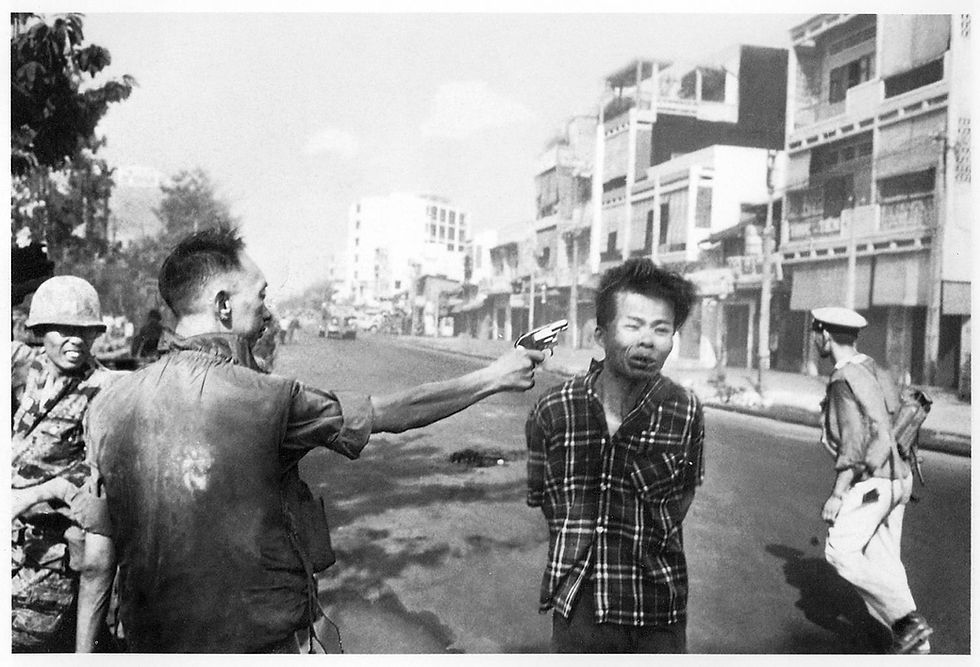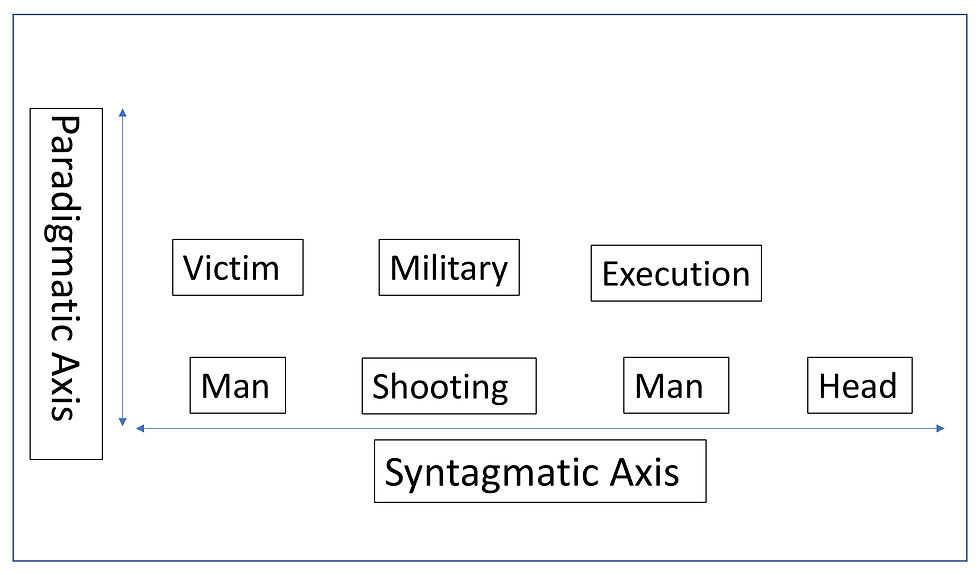Syntagms and paradigms
- Dave Macey

- Jul 22, 2018
- 4 min read

Language is a construction of various elements which all relate to each other and have an effect on each other. The sentence in organized in a certain way to make sense to the reader, that the words are placed in a certain order to create a narrative for the reader. The words have to be comprehensible and organized in a certain way to conform to a wider structure, and in the case of this blog post, the wider structure is known as the English language.
The same applies to photography. The photograph needs to be organized in a certain way for the image to be comprehensible, and understood by the reader, and so has a structure that is similar to language. This is because both languages and photography rely on semiotics and consequently, both follow the same rules. As Barthes noted “the structure of the photograph is not an isolated structure” (Barthes, 1977, p16) because photography reflects so much of our perceived reality that a system has to be used to make the world understandable.
Within semiotics there is a theory called structuralism. Structuralism examines the relationship between the various elements, whether it be words or images, into being understandable and comprehensible by the viewer. With this being the case, it then becomes possible to build an understanding of how imagery is read, it can turn something that could seem undefinable and illogical into a system that is comprehensible and coherent.
Probably, theplace to start is with the horizontal and vertical axes. To help explore this concept an example is needed, which is Saigon Executionby Eddie Jones. This is probably one of the most powerful images of war that has ever been taken and Eddie Adams was awarded the Pulitzer Prize for the image.

The image can be described as a man shooting another man in the head. This is the most basic of descriptions and could be analysed on a much deeper level, but to explain the use of horizontal and vertical axes, it will suffice. The way the sentence is constructed has produced a narrative, a most basic story of an event and has noted most of the key elements . Also, the sentence is mainly constructed using nouns, which are words that describe people, places and things, words that relate to physical objects.
The use of nouns becomes important when using the horizontal and vertical axes. With these axes, the horizontal line is called the Syntagmaticline and the vertical is the Paradigmaticline. The syntagmatic line is basically the sentence “man shoots another man in the head”, with the key words being Man Shooting Man Head and is all of the nouns used within the sentence. This is because “a syntagm is an orderly combination of interacting signifiers which forms a meaningful whole” (Chandler, 2007, p85), with the signifiers being the nouns within the sentence. So, the structure of the sentence is replicated on the syntagmatic axis as the words are placed in the same order. So far this all seems rather straight forward and simple, but the syntagmatic axis is needed because it relates to the paradigmatic axis.

This then leads to defining a paradigm. A paradigm can be described as a web of knowledge that relates to each other and constructs a model or a pattern of thinking that defines a certain object, place, person, item, etc. With this in mind a paradigm could be “the body of accepted theory, illustrate many or all of its successful applications, and compare these applications with exemplary observations and experiments” (Khun, 1962, p476) A good example of paradigms are the sciences such as physics or chemistry because they have constructed webs of knowledge that support conclusions. But paradigms can also be used within the social sciences and how concepts such as motherhood, masculinity and immaturity are defined.
So, by seeing the paradigms defines what values are being related to each other and the syntagmatic axis constructs the order and hierarchy of those relationships. With Man Shooting Man Head the four paradigms are placed within a hierarchical structure that produces a narrative. But because this is performed on the visual level the hierarchy of the image is emphasised and so demonstrates the order in which an image is read.
The consequence of this dynamic, of having a narrative controlled by a hierarchy of paradigms, the value of each paradigm is affected. The man shooting, Brigadier General Nguyen Ngoc Loan, has a higher value than the victim Nguyen Van Lem, a captain of a terrorist squad. This is because the paradigm of an Army General performing an execution has a greater value than the victim, the person being executed. However, if the sentence describing the execution read “The victim of a military execution” the emphasis shifts from the army general to the terrorist and consequently alters the syntagmatic axis, which alters the paradigmatic axis.
This in itself demonstrates the fluidity of meaning within an image and how value is attributed, but at the same time establishes how that fluidity works. The horizontal and vertical axes dynamic opens up a whole world of different meanings and values and how they influence each other in exciting and challenging ways.
Bibliography:
Chandler, D. (2007) Semiotics: The Basics, Routledge, London
Barthes, R. (1977) Image, Music, Text, Fontana Press, London
Khun, T. (1962) The Structure of Scientific Revolutions, Western Philosophy: An Anthology, Cottingham, J. (editor), (2008), Blackwell Publishing, Oxford



Comments